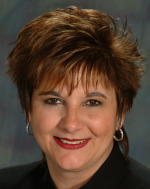BY MICHELE A. QUIROLO
The aging of the baby boom segment of the U.S. population is bringing with it a significant shift in the demographic makeup of our country ”“ a shift that creates myriad issues and is causing a strain on our health care delivery system. Cost, availability and access to appropriate care will be increasingly critical, particularly as the health care needs of large portions of the population change.
According to the Centers for Disease Control and Prevention, more than 117 million adults suffer from one or more chronic conditions. As might be expected, the elderly are disproportionately affected: The majority of the elderly live with a chronic illness. Complex chronic diseases have become the leading cause of death in this country, and 75 percent of health expenditures are related to the treatment of chronic disease. New York state ranks third in the nation in the number of older adults and by 2020, almost one quarter of the state”™s population will be 60-plus.

While living longer is a positive trend, living healthy must remain the goal. Understanding one”™s chronic disease and improving the ability to self-manage it is key. The traditional model of managing the medical aspects of a chronic condition is being replaced with new strategies focused on interactive learning, health improvement, coping strategies, problem solving and self-guided decision-making. These strategies often short circuit the need for medical intervention during a crisis.
Health care coaching, now employed by many hospitals to avoid costly readmissions, has a positive impact for patients, for hospitals and for the health care system as a whole. For the patient, coaching results in an improved ability to conduct daily activities and brings about an enhanced quality of life. For a hospital, coaching reduces the financial burdens that come with hospital readmissions. For Medicare, Medicaid and other payers, the cost of covering expensive hospital stays can be greatly reduced or even eliminated as coaches work to prevent hospitalization or readmission.
By building partnerships with other care providers and leveraging innovative technologies, home health care agencies are able to address the need for chronic disease self-management where it matters most ”“ in the home.
The Visiting Nurse Association of Hudson Valley has created partnerships with two community hospitals, Northern Westchester Hospital and St. John”™s Riverside Hospital, to provide a Care Transitions Coach Program that works as an extension of the hospital services. This program is initiated while the patient is in the hospital and the coach remains connected to patients for 30 days after discharge. During this period, patients are taught to recognize “red flags” or warning signs for managing their disease or condition so they can employ the necessary interventions to prevent a disease crisis. The use of a personal health record, follow-up appointments with physicians and medication management are all emphasized in the program.
Advances in technology also continue to provide additional tools to manage chronic disease. Telehealth, an electronic method of delivering health-related services and information, is beginning to change the way health care is delivered and enables efficiency gains and cost containment. Telehealth can be as simple as using a smartphone to track and monitor a variety of health care metrics, to a face-to-face virtual home health care visit by a nurse, to remote robotic surgeries performed by a physician in underserved areas. The Visiting Nurse Association of Hudson Valley has launched a new wireless video-based tablet telehealth system that provides regular monitoring of patients with chronic conditions and those who have a need for additional assistance.
Health care reform is moving rapidly, and one of its key characteristics is the decreased use of hospitals for care delivery. Clearly, acute care needs will continue to be provided in those institutions. However, care will increasingly be provided in the least restrictive environment ”“ the home. The role of home health care, previously seen as the setting of last resort, is moving into a more prominent position as new models of care are being created. Not only is home health care less costly, but the home is also often the setting in which patients would prefer to receive care. As reform of our health care system continues, home care will become the safety net for preventing hospital readmissions and managing chronic disease.
Partnerships among local health care providers, including hospitals, nursing homes, rehabilitation centers and home care agencies in our area will become increasingly important as new models of care emerge. The successful management of chronic disease and other issues that affect an aging population require a coordinated effort on the part of all care providers, and keeping the patient at the center of care is the only way to ensure quality, to reduce hospitalizations and readmissions, and to address the complex issues that will increasingly cause a strain on the health care system in our country.
Michele Quirolo since 1994 has been president and CEO of VNA of Hudson Valley, a nonprofit home health care agency founded in 1898. She can be reached at mquirolo@vnahv.org.


















Agreed. Here’s another way to look at it. I cover this during my seminars on retiree healthcare.
76 million baby boomers in America:
According to the Department of Health & Human Services: 70% of all Baby Boomers will need some form of LTC in retirement and 25% are expected to have to stay in a nursing facility for at least 3 years.
According to Kaiser Foundation:
15,465 nursing facilities. 1,646,302 beds in the facilities. 1,366,390 beds occupied in the facilities. That means there are 279,912 beds available in nursing facilities throughout the country. How may Baby Boomers?????